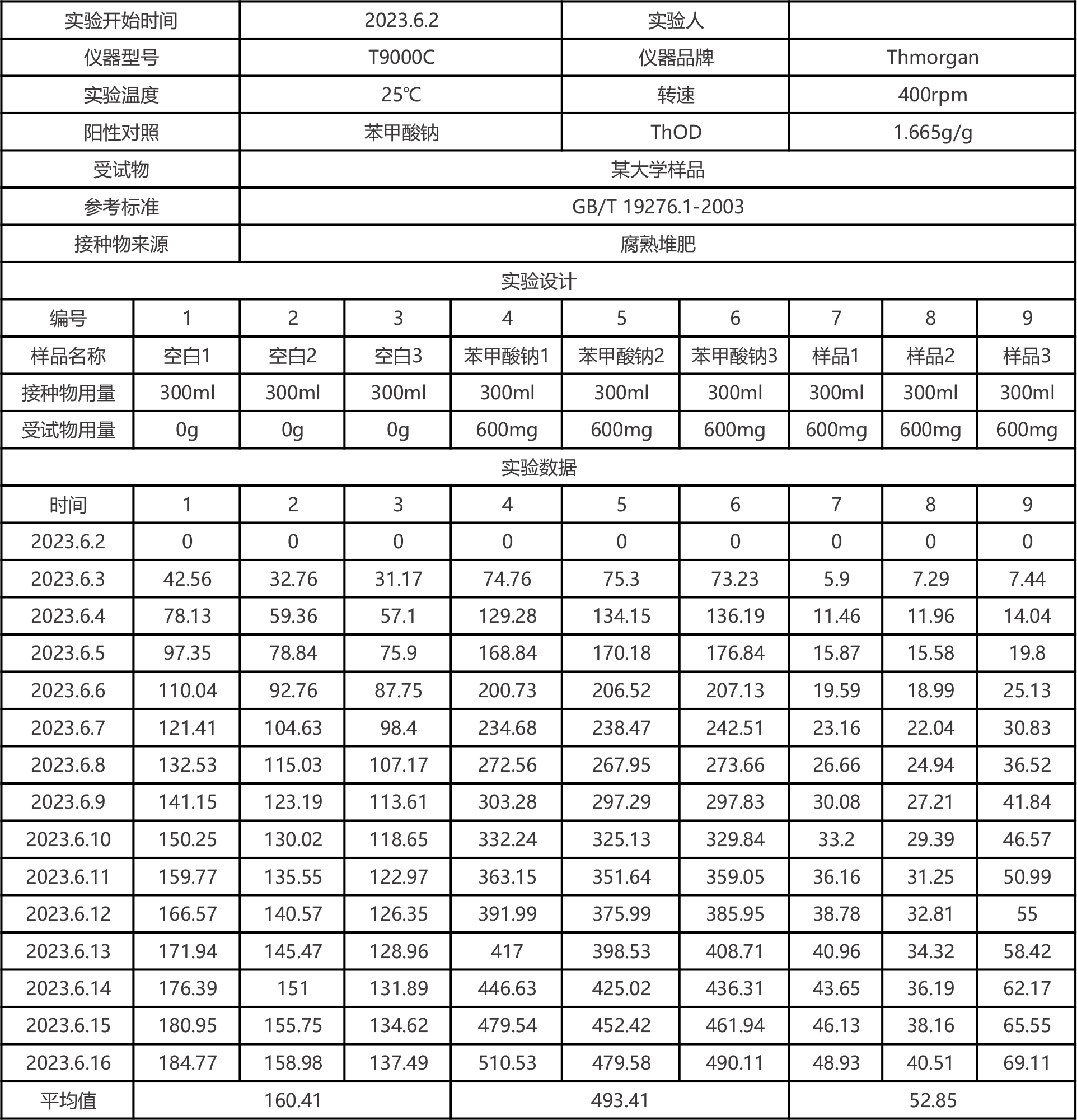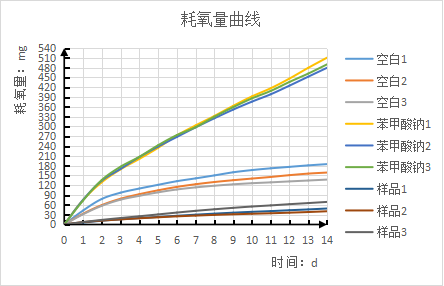Product
All categories

Seawater method
Seawater method(reference standard GB/T 19276.1-2003 Determination of the final aerobic biodecomposition capacity of materials in aqueous culture medium using the method of measuring oxygen demand in closed respiration meter) :
One Experimental purpose
1. Can be used for bio-based biodegradability detection, meet GB/T19276-1;
2. Can be used for Marine biodegradability detection,GB/T40611-2011;
3. It can be used for the potential biodecomposition test of materials under the action of specific microorganisms, GB/T 19275-2003;
4. It can be used for biodegradability detection of degradable polyethylene film for packaging, GB/T 2461-1999;
5. Can be used for rapid biodegradability detection of chemicals, GB/T 21801, GB/T 21802, GB/T 21803;
6. Meet international standards OECD301C, OECD301F, OECD302C, EC-partc4, IS05815-1:2003, etc.;
7. Meet international standards OECD, EEC, ASTM, BBA, ISO, MITI test research;
8. Can be used for BOD3, BOD5, BOD7, BOD28, BOD42 and other determination;
9. Can be used for activated sludge biodegradation detection;
10. Can be used for microbial respiration measurement;
Second, experimental principle
Microorganisms consume oxygen in the culture bottle, produce carbon dioxide, carbon dioxide is absorbed by quicklime, the pressure of the culture bottle is reduced, so that the pressure on both sides of the pressure gauge produces a pressure difference, resulting in the electrolytic circuit connection, the copper sulfate solution in the electrolytic bottle electrolysis produces oxygen, which is added to the culture bottle, so that the pressure in the culture bottle gradually returns to the initial level. The amount of electricity passed into the electrolytic bottle is proportional to the amount of oxygen produced, and the coulombmeter accurately monitors the amount of electricity passed into the electrolytic bottle, so as to calculate the oxygen consumption. The ratio of actual and theoretical oxygen consumption is the biodegradation rate of the test sample.
Third, experimental materials
1. Distilled water
2. KH2PO4(no water)
3. K2HPO 4(no water)
4. Na2HPO4·2H2O
5. NH4CI
6. MgSO4·2H2O
7. CaCI2·2H2O
8. FeCI3·6H2O
9. CuSO4·5H2O
10. Sodium benzoate
11. Urea
12. Sodium lime
13. Compost
Four experimental steps
1. Instrument preparation
1) Connect the instrument with electrolytic bottle, reaction bottle and air bottle.
2) Turn on the power, set the temperature, and wait for the temperature to stabilize. Check whether the instrument indicators are normal
2. Air leakage test
After the instrument is ready, open the U-tube, supply power to the electrolytic bottle, and close the U-tube 5 minutes later to clear the accumulated data. After 12 hours, observe the change of the value, and continue the experiment after the value is normal.
3. Prepare the culture solution
1) Inorganic salt solution A constant volume to 1000ml:
KH2PO4(anhydrous) 8.5g
K2HPO 4(anhydrous) 21.75g
Na2HPO4·2H2O 33.4g
NH4CI: 0.5g
2) Inorganic salt solution B: Dissolve MgSO4·7H2O 22.5g in water at a constant volume of 1000ml;
3) Inorganic salt solution C: Dissolve CaCI2·2H2O 36.4g in water with a constant volume of 1000ml;
4) Inorganic salt solution D: Dissolve FeCI3·6H2O 0.25g in water with a constant volume of 1000ml;
5) Solution E: Take 30ml solution A, 3ml solution B, 3ml solution C, 3ml solution D, and the volume is fixed to 3000ml
6) The self-made compost of Tomorgan was mixed with solution E for aeration culture for a period of time, and the filtrate was taken.
4. Sample addition
1) 300ml culture solution and 600mg sodium benzoate were added into the reaction bottle as the positive control group
2) Take 300ml culture solution and 600mg samples and add them into the reaction bottle as the experimental group
3) Connect the reaction system to check the air tightness.
5, adjust the instrument parameters
Clean up the accumulated data of the instrument and start the experiment
6. Maintain and observe data regularly
After the experiment began, it was observed every day whether there was any abnormality in the experimental equipment and whether the experimental data growth was in line with the expectation.
Five T9000C degradation experiment record report

Six Carbon dioxide release curve:

Analysis of results:
1. The experiment began on June 2, 2023 and lasted for 14 days until the report date;
2. Within 14 days, the average oxygen consumption in the blank group was 160.41mg, and that in the sodium benzoate group was 493.41mg, and the degradation rate was 33.33% (333/999*100%), which was relatively normal.
3. There was little difference in data among the groups in this experiment, and the parallelism was good. The samples to be tested had an anti-degradation feature.




